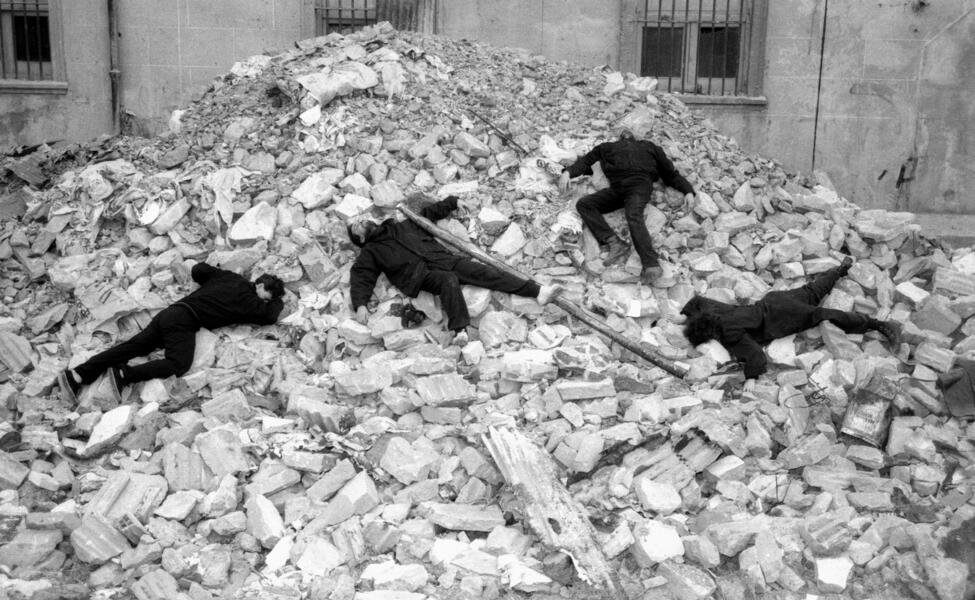Banners: Escombros Group at WALDEN Gallery
From March 24th to May 5th there is an exhibition of the Argentine group "Escombros" created in 1988.

Maria de los Ángeles Rueda states in her curatorial text "The activity of the group begins with a graffiti or painted on July 9, 1988 in a vacant lot in the neighborhood of San Telmo, whose photographed image is sent by mail as a postcard. We are an artist of what remains: a wall, a rubble, the relationship between terms and signifiers.
Shortly thereafter, in November, Pancartas I made a show based on a march of photo performances on banners displayed below the highway, on Paseo Colón and Cochabamba in the neighborhood of San Telmo, and then walked through the streets in a collective way presenting the documentation of the series of scenes made in a space "razed" where a series of bodies form figures that evoke horror, torture, the recent past, the human condition.
Taking as a display support banners painted in black, they present 13 black and white photographs, a record of various performances held between July 9 and November 5 in Buenos Aires and La Plata, along with they also show the invitation card and the catalog where the group wrote their basic ideas. The first element they placed was a huge sign that said Art Gallery: Exposed Group Rubble. The situation finally consisted of the exhibition of 2 hours, where a refreshment was served to the spectators who approached adding later to a march with the mentioned banners by the Avenue Paseo Colón. Some 200 people marched with the group. In the presented catalog, the focus was on the search of the group: "we expressed the broken, the broken, the violated, the violated, the torn. That is to say, the man and the world of here and now "
Debris was born in 1988, in full hyperinflation, as public art. In that Argentina where the economic value of things changed hour by hour, everything seemed to collapse, including democracy reconquered at the cost of 30,000 missing and collective wounds that may never close. When analyzing this social, political and economic situation, the founding artists of the group asked themselves what would be left of the country. The answer was: "the rubble." That day the group acquired its name.
Next to the name, and beyond the inevitable changes, there are characteristics that remained intact:
• Most of the works were made outdoors, one street,
a square, a cellar, an urban stream
• They always express the sociopolitical reality that the country lives
at that moment
• It is expressed through all possible forms of communication: installations, manifestos, murals, objects, posters, poems, prints, talks, visual poems, graffiti, postcards, net art.
The debris works are aimed at all types of public, without exception; they work with other artists and / or with the spectators, who in this way become co-authors of their proposals. Eclecticism, mixed techniques and a constant search for new forms shape each of the creations.
Its members come from various disciplines: plastic, journalism, design, architecture. Their works are always collective, annulling the individualities that compose it. They do not belong to any political party or religious creed in particular. Despite constantly denouncing the conditions of absolute injustice in which the men, women and children of Argentina and Latin America live, it is a mistaken simplification to say that it is only a protest group.
As background in the art world, it is enough to remember that some of the artists that make up the group were co-founders of the Diagonal Zero Movement, created by Antonio Edgardo Vigo (1968); participated in the happenings of the Di Tella Institute (1969); they represented Argentina in the 7th. Biennial of Paris (1971); they formed the Group of 13 of the CAYC (1972), a group with which they won the XIV Bienal de San Pablo, etc.-




